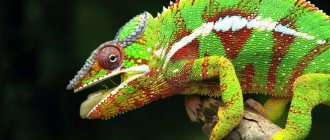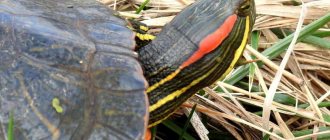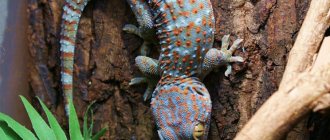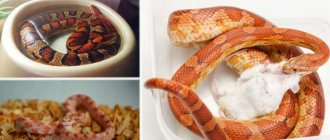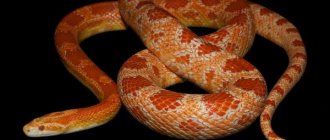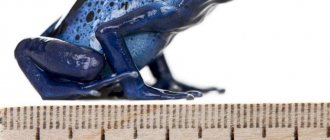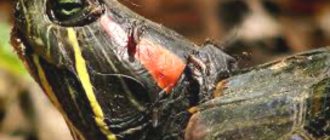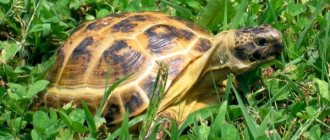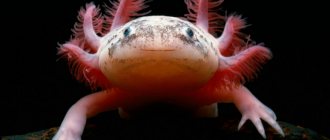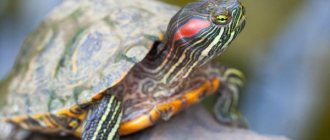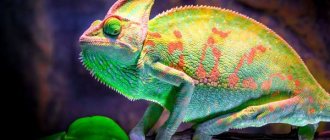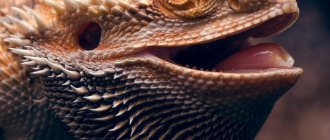The common tree frog (evichaina) is a miniature frog, the body size of which is only 5 centimeters. It belongs to the order of tailless frogs of the family. A distinctive feature of the animal is the rapid change of color, which can change before our eyes and depends on various factors. Normally, the skin color is green, but it can change and become white, gray, or brownish-brown.
Tree frogs are able to change color depending on external conditions
Origin of the species and description
Photo: Tree frog
There are more than 700 species in the tree frog family, belonging to approximately 40 genera. They are found primarily in the New World tropics, but are also present in Europe, Australia, and much of nontropical Asia. The tree genus includes hundreds of species.
Better-known members include the barking tree frog (H. gratiosa), the European green tree frog (H. arborea), whose range extends throughout Asia and into Japan, the gray tree frog (H. versicolor), the green tree frog (H. cinerea), and the Pacific tree frog (H. cinerea). tree frog (H. regilla). Tree frogs are a large and diverse group of amphibians. They have evolved to lead a wide variety of lifestyles.
Video: Tree frog
This means there are some interesting facts about tree frogs:
- small size - most tree frogs are so small that they can sit comfortably on the tip of a finger;
- teeth - Gunther's marsupial frog (Gastrotheca guentheri) is the only frog that has teeth in the lower jaw;
- toxicity - simply touching a yellow-striped dart frog (Dendrobates leucomelas) can cause heart failure;
- Swallowing - Like many other frogs, tree frogs use their eyes to help them swallow food. They close their eyes very tightly, which pushes food down their throat;
- Flying Frog - The Costa Rican flying tree frog has straps between its toes that help it glide between trees.
Shared housing with other inhabitants
The main problem with housing together is that the inhabitants can eat each other. To avoid this, it is necessary to have species of the same size. In addition, the conditions of detention they require must be the same.
Poisonous representatives should not be housed in the same housing as other species. Snakes would also be inappropriate, since caring for them is fundamentally different from caring for toads. But lizards, for example, get along well with frogs.
Appearance and features
Photo: What a tree frog looks like
Tree frogs have the typical shape of a frog, with long hind legs and smooth, moist skin. One of the characteristic features of tree frogs is the disc-shaped adhesive pads on their toes, which help them climb trees. Frogs' forward-facing eyes are often very large, which helps them hunt their invertebrate prey, usually at night.
Fun fact: Tree frogs can be found in a wide variety of colors, some of them very bright, although most are green, brown or gray. Several species can change color to blend into the background in a camouflage pattern. For example, the squirrel frog (Hyla squirella) is similar to chameleons in its ability to change color.
Although tree frogs can grow to a wide range of sizes, most species are very small because they rely on leaves and thin branches to support their weight. At 10 to 14 cm in length, the white-lipped tree frog (Litoria infrafrenata) of Australia and Oceania is the largest tree frog in the world. The largest tree frog in the United States is the non-native Cuban tree frog, which ranges from 3.8 to 12.7 cm in length. The world's smallest tree frogs are less than 2.5 cm in length.
The green tree frog has elongated limbs that end in sticky saucer-shaped toes. Their skin is smooth on the back and granular on the ventral side. They have a variable color: apple green, dark green, yellow, even gray depending on certain external factors (luminosity, substrate, temperature). The male is separated from the female by his vocal sac, which is usually yellow, green or brown, turning blackish in the fall.
The gray tree frog has "warty" green, brown or gray skin with large, darker spots on its back. Like many tree frogs, this species has large suction cup-like pads on its feet. He has a white patch under each eye and a bright yellow-orange one under his hips.
Common in the rainforests of Central America, the red-eyed tree frog has a bright green body with blue and yellow stripes on the sides, a bright orange band with sticky pads at the end of each toe, and bright red eyes with vertical black pupils. Its pale underside has thin, soft skin, while its back is thicker and rougher.
Interesting Facts
- Unlike other members of the family, the golden tree frog (Litoria aurea) does not feed on insects, but engages in cannibalism, eating its own kind.
- Tree frogs do not have poison glands. Toxins are simply adsorbed by the skin from the poisons of insects that the amphibian eats.
- Substances contained in the secretory fluid of the skin secretions of the Australian white tree frog help fight herpes in humans.
- A distinctive feature of Australian tree frogs is the vertical location of the pupils and the absence of pigments in the eyelids.
Did you like the article? Share with your friends:
Where does the tree frog live?
Photo: Red-eyed tree frog
Tree frogs are found on every continent except Antarctica, but they are most diverse in the tropics of the Western Hemisphere. About 30 species live in the United States, and more than 600 can be found in South and Central America. Not surprisingly, many tree frogs are arboreal, meaning they live in trees.
Special adaptations such as footrests and long legs help them climb and jump. Non-arboreal tree frogs live in lakes and ponds or among moist ground cover. Green tree frogs live in urban areas, forests and woodlands, swamps and heaths. They have a habit of settling in and around suburban homes, around shower blocks and water tanks.
Red-eyed tree frogs are native to tropical forests, where they are commonly found in lowland rainforests and surrounding hills, especially in areas close to rivers or ponds. Red-eyed tree frogs are excellent climbers and have suction cup toes that help them attach to the undersides of leaves where they rest during the day. They can also be found clinging to branches and tree trunks throughout their habitat and are capable swimmers when needed.
Gray tree frogs can be found in many types of tree and shrub communities located near permanent water. This species usually lives in wooded areas, but may also frequent orchards. The gray tree frog is a true “tree frog”: it can be found at the top of even the tallest trees.
These frogs are rarely seen outside of the breeding season. When they are not active, they hide in tree holes, under bark, in rotten logs, and under tree leaves and roots. Gray tree frogs overwinter under fallen leaves and snow cover. Their eggs and larvae develop in shallow forest ponds and swamps, puddles, ponds in forest clearings, swamps and many other types of permanent or temporary bodies of water that do not have significant flow, including ponds that have been dug by people.
Now you know where the tree frog is found. Let's see what this frog eats.
Nutrition
Frogs are predatory creatures, but their specific menu depends on their habitat and, of course, their size. For example, Australian giants show a gastronomic interest in any living creature that they can swallow.
Their main food is flying invertebrates, but they can also cope with larger opponents. They attack lizards and even their own brothers, that is, they do not disdain cannibalism.
In search of prey, tailless Australians poison themselves at night, but first they come to the water so that, by plunging into it, they nourish their skin and entire body, thus satisfying their need for liquid. Without its reserves, they are not able to survive, but as, in fact, according to their status, amphibians should.
These large, interesting, exotic and incredibly entertaining frogs are often kept in a terrarium with tropical plants planted inside. But even there, breeders take care of an artificial pond for full bathing and spray their pets’ bodies with warm water every day.
These Australian frogs are fed insects, crickets, cockroaches, and lean meat. Sometimes these predatory giants are even given newborn mice, which they eat to complete pleasure.
With their gluttony, such creatures are capable of frightening not only their victims, but even some breeders who are horrified by the amount of food they require every day. Smaller species feed mainly on flying insects, snails, caterpillars, termites, ants and other invertebrates.
What does a tree frog eat?
Photo: Common tree frog
Most tree frogs are herbivores when they are tadpoles. Adults are insectivores and eat small invertebrates such as moths, flies, ants, crickets and beetles. Larger species also eat small mammals such as mice.
Green tree frogs sometimes sit under outdoor lights at night to catch insects attracted to the light, but they are also capable of catching large prey on the ground, including mice. Cases of bats being caught near the cave entrance have also been reported.
Adult gray tree frogs primarily hunt various types of insects and their own larvae. Ticks, spiders, lice, snails and slugs are their common prey. They may also occasionally eat small frogs, including other tree frogs. They are nocturnal and hunt in the undergrowth of forests on trees and bushes. As tadpoles, they eat algae and organic detritus found in the water.
Red-eyed tree frogs are carnivores that feed primarily at night. The green color of the red-eyed tree frog allows it to remain hidden among tree leaves, waiting for insects or other small invertebrates to appear. Red-eyed tree frogs will eat any animal that fits their mouth, but their normal diet consists of crickets, moths, flies, grasshoppers, and sometimes even smaller frogs.
Behavior
Woodworms spend most of their time on land. They spend the day in a secluded place and feed on insects flying past them. At dusk, the tree frog goes on a real hunt. She spends the night among tree branches or in thick grass, lying in wait for her prey. Having chosen a victim, it slowly approaches it, and then a lightning-fast jerk follows - and the prey ends up on its sticky tongue.
The small teeth of the upper jaw are able to provide a secure grip. Having swallowed the tasty morsel, the frog continues to hunt. To grab prey, it makes a long jump with its mouth wide open.
During the day, the tree tree rests, sitting on a leaf or choosing a comfortable place on a reed stem. It completely blends into the surrounding background. Its color is not constant and depends on light and humidity, as well as on the temperature and color scheme of the environment.
Coloring may reflect the emotional state of the amphibian. The common tree frog can acquire grassy green, lemon yellow, gray, brown and even lilac colors.
With the arrival of autumn cold, during leaf fall, the tree descends to the ground. She begins to search for winter shelter and, burrowing into leaf litter or warm moss, falls asleep. In April, the males wake up first, and only after 8 days do the females emerge from hibernation.
Features of character and lifestyle
Photo: Tree frog
Many male tree frogs are territorial, and defend their habitat with a loud call. Some species also defend their territory by shaking out vegetation that keeps other males away. Gray tree frogs are a nocturnal species. They lie dormant in tree hollows, under bark, in rotten logs, under leaves and under tree roots. At night, they search for insects in trees, where they can climb vertically or move horizontally using specially adapted pads on their feet.
The eyes of the red-eyed tree frog are used to display fear, called deimatic behavior. During the day, the frog camouflages itself by pressing its body to the bottom of the leaf so that only its green back is visible. If the frog is disturbed, it flashes red eyes and shows its colored sides and legs. The color may surprise the predator long enough for the frog to escape. While some other tropical species are poisonous, camouflage and fright are the red-eyed tree frog's only defense.
Fun fact: Red-eyed tree frogs use vibration to communicate. Males tremble and shake leaves to mark territory and attract females.
Green tree frogs are timid, and most do not tolerate being treated well (though after many years in captivity, some will grow up to accept this). For most frogs, handling causes them stress, which can affect their health.
Breeding
At the end of wintering, the male and female are placed in a terrarium together. The female lays several portions of eggs, which attach to aquatic plants. Tadpoles appear after 8-14 days and develop for another 1.5-3 months. They are recommended to be planted separately in specially prepared horizontal aquaterrariums with walkways for exiting the water after transformation. Before metamorphosis, the tadpole reaches 4.5-5 cm. The water temperature is maintained at 20-24 ° C, aeration is required using a compressor, as well as controlled filtration.
Social structure and reproduction
Photo: Poisonous tree frog
Reproduction of green tree frogs begins shortly after wintering and ends in July, peaking in mid-April and mid-May. Breeding sites are small ponds with well-developed vegetation, in which adult frogs return after a migration of up to 3-4 km. Mating occurs at night. A single clutch (800 to 1000 eggs) is carried out in small clusters hanging from a submerged support (plant or tree). Metamorphosis of tadpoles occurs after three months. Small frogs begin to leave the water even when the resorption of their tails is not yet complete.
Gray tree frogs breed in late spring and early summer. They, like other species of frogs, tolerate freezing temperatures. During the day, these frogs remain in the trees around the pond. In the evening, males call from trees and bushes, but enter the pond after finding a partner. Females lay up to 2,000 eggs in small clusters of 10 to 40, which are attached to vegetation. The eggs hatch within five to seven days and develop into tadpoles 40 to 60 days after hatching.
The red-eyed tree frog breeds between October and March. Males try to attract females through their croaking. Once they have found their mate, they fight other frogs to be able to latch onto the female's hind legs. The female will then proceed to latch onto the underside of the leaf while other males attempt to latch onto her. The female is responsible for supporting the weight of all the frogs, including the one attached to her, while they fight.
They then take part in a process called amplexus, where the couple hangs upside down under a layer of water. The female lays a clutch of eggs on the underside of the leaf, and the male then fertilizes them. Often the female becomes dehydrated and falls into the pond with her companion. From this point of view, the male must hold on to her, otherwise he may lose her to another frog.
Once the eggs hatch, the tadpoles are released into the water where they develop into frogs. Often tadpoles do not survive due to the various predators that can be found in the water. Those that survive develop and become red-eyed tree frogs. Once they become frogs, they move to the trees with the rest of the red-eyed tree frogs, where they will remain for the rest of their lives.
What to prepare: vertical terrarium
For tree frogs, a vertical type aquaterrarium is suitable, including a small pond, a section of shore and vegetation. The minimum dimensions of a terrarium to accommodate 1-2 animals are 20x20 cm at the base and 50 cm in height (excluding the height of the lamp). The container should be equipped with additional downward daytime heating using an incandescent lamp or a mirror lamp. The terrarium is not heated at night. The temperature during the day should be maintained at 23-26 ˚С, at night – 16-20 ˚С.
Inside, imitating the natural landscape:
• Place small driftwood, branches, twigs on which the frog will rest.
• Moisture-loving plants are planted or installed in containers: bromeliads, anubias, orchids, small ficuses, philodendrons, scindapsus, etc.
• Set up a shallow (8-15 cm) pond with aquarium plants - echinodorus, cryptocorynes. The bottom is laid out with aquarium pebbles, and a large stone protruding from the water is installed near the shore. You can throw several ampullary snails into the pond, providing natural cleaning of the walls.
• At the back or side wall of the terrarium, the bank is equipped with a substrate that is necessary for the placed plants. When using potted plants, the bank is lined with sphagnum.
The terrarium is sprayed with warm water every day - the moss should not dry out. Tree frogs can be kept singly or in groups.
Natural enemies of tree frogs
Photo: Tree frog in nature
Tree frogs survive well despite heavy predatory pressure from animals such as:
- snakes;
- birds;
- carnivorous mammals;
- fish.
Snakes are particularly important predators of tree frogs. They primarily search for prey using chemical signals rather than visual ones, negating the camouflage protection that most tree frogs have. In addition, many snakes are skilled climbers, able to climb trees just like tree frogs. Juvenile rat snakes (Pantherophis sp.) and tree boas (Corallus sp.) are among the species that prey heavily on frogs.
Otters, raccoons and squirrels feed on tree frogs. The keen vision and dexterous paws of these mammals help them find and control amphibian prey. Frogs are sometimes caught in trees, but most often they are caught moving to and from their breeding grounds. At least one species of bat regularly precedes the emergence of frogs, capable of distinguishing edible species from toxic species by calling alone.
Birds usually have excellent eyesight and are able to find even the most well-camouflaged tree frogs. Blue jays (Cyanocitta cristata), owls (Strix sp.), and red hawks (Buteo lineatus) are species that regularly feed on tree frogs.
It's important to remember that most frogs, including tree frogs, spend the first part of their lives in the water as tadpoles. At this time, they are hunted by other amphibians, insects and, most importantly, fish. Many tree frogs, such as gray tree frogs (Hyla versicolor), avoid fish predation on their young by laying eggs only in fish-free water, such as temporary pools. Other frogs, such as green tree frogs (Hyla cinerea), are resistant to fish pressure for reasons that are not entirely understood.
Predators of red-eyed tree frogs typically include bats, snakes, birds, owls, tarantulas, and small alligators. Tree frogs use their bright colors as a defense mechanism to stun their predators (scare coloration). While their predators use sight to hunt, once their eyes land on their prey they are often startled by shockingly bright colors that leave only a “ghost image” where the red-eyed tree frog originally was.
Fun Fact: Many tree frogs have brightly colored (blue, yellow, red) areas of their bodies, such as their feet or eyes. If they are threatened by a predator, they suddenly flash these colored areas to startle it, which allows the frog to jump out.
Animal care
Caring for such a pet is not too difficult. Basically it consists of the following points:
- arrangement of the terrarium;
- maintaining optimal temperature;
- choosing a suitable soil;
- feeding animals.
Any owner of such a pet wants to arrange his home as beautifully and comfortably as possible. First of all, soil is poured onto the bottom of the terrarium, and a small pond should also be organized. For vertical decoration, a wooden driftwood that was found on the street may be suitable, and if the size of the terrarium allows, then you can place a stump with a hollow in it.
Tree frogs love warmth and humidity
In addition, you must not forget about landscaping your home. For this you can use vines, ferns and other vegetation. It can be purchased at a pet store. It is imperative to clean the glass and the inside of your unusual pet’s home. Thanks to this, it will be possible to protect the frog from diseases and improve its living conditions.
As for the temperature, you should know that the tree frog loves warmth and high humidity, so in its place of residence the temperature should be maintained at 20-30 degrees. It depends more on the type of amphibian and the time of day. The pet should not be allowed to become hypothermic or overheated, as this can negatively affect its skin and vital processes.
Ordinary soil, sand or gravel can be suitable as soil for the terrarium. In addition, special soil for amphibians can be purchased at a pet store. It should be taken into account that tree frogs like to sit on land for a long time, so the soil needs to be moistened regularly.
As for nutrition, the frog's main diet is insects flying around. These are crickets, mosquitoes, flies and the like. She can also hunt the inhabitants of the reservoir, which is facilitated by a long and sticky tongue at the tip. When keeping a tree frog at home, it should be fed twice a day - morning and evening.
Population and species status
Photo: What a tree frog looks like
With more than 700 species worldwide, tree frogs are found throughout much of North, Central and South America, as well as Australia and New Guinea. Historically, frogs have been an indicator species, evidence of the health of an ecosystem or its impending vulnerability. It is not surprising that the world's amphibian population has declined in recent years.
Research shows that threats to red-eyed tree frogs include chemical pollution from pesticides, acid rain and fertilizers, non-native predators and increased exposure to ultraviolet radiation from a weakening ozone layer, which can damage fragile eggs. Although the red-eyed tree frog itself is not endangered, its rainforest home is under constant threat.
Global warming, deforestation, climate and atmospheric changes, wetland drainage and pollution have led to a sharp decline in the number of red-eyed tree frogs in the tropical forests of Central and South America.
The green tree frog population, like many frogs, has also declined in recent years. This species is long-lived and can live for more than 20 years. Because of this longevity, the population decline went undetected for several years. Adults are still seen and heard regularly, but young frogs are becoming scarce.
Another type of terrarium
They also use a different setting in the terrarium - without land plants, but only with representatives of the aquarium flora floating in the water. Such an aquaterrarium should be large in volume: base - 30x30 cm, height - 40-50 cm. Water is filled to half, large stones with imitation grottoes are installed, and a large number of aquarium plants are placed. Experience shows that tree frogs thrive in such conditions.
Any terrarium needs to be equipped in such a way that it is easy to clean. Such events must be carried out at least once every 3-4 weeks.
